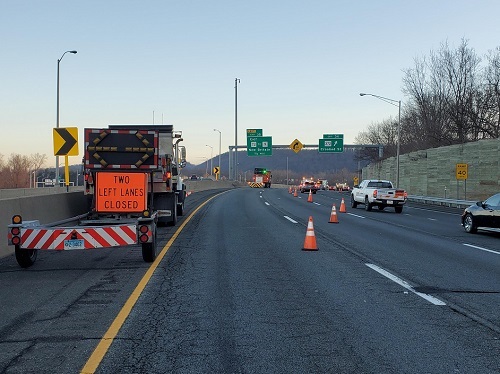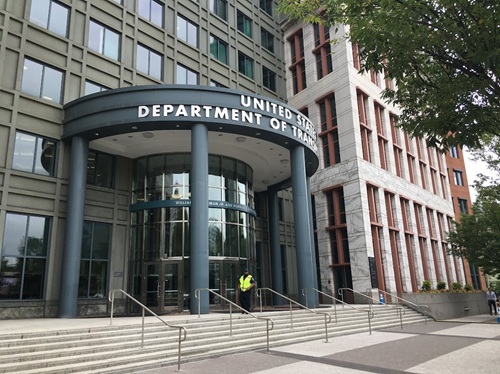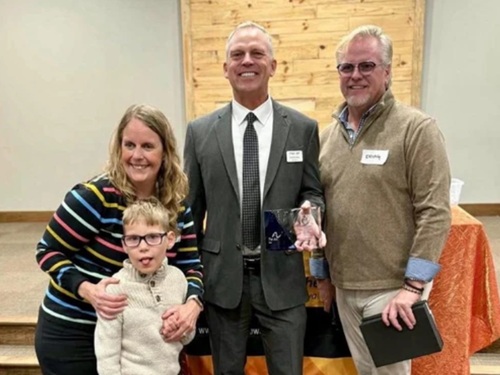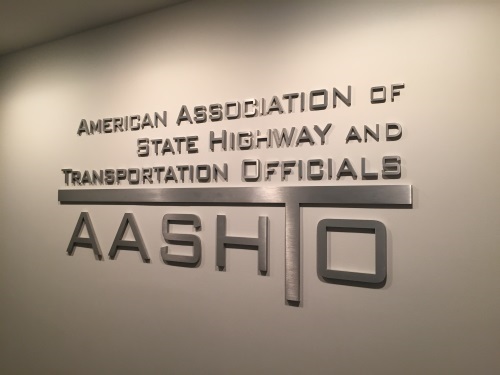The American Association of State Highway and Transportation Officials recently submitted a detailed six-page letter to the Federal Highway Administration commenting on the agency’s proposed revisions to “Procedures for Abatement of Highway Traffic Noise and Construction Noise” regulations issued in October.
[Above photo by AASHTO]
AASHTO recognized in its letter that FHWA’s notice of proposed rulemaking or NPRM results from “years of FHWA research and feedback received from AASHTO in 2015 and 2019” on appropriate and effective noise standards to protect the public’s health, welfare, and livability in the planning, design, construction, and operation of highways.
However, while AASHTO said it supports the proposed update to the federal noise abatement program, the organization stressed it is “concerned that the lack of detailed language” in the new definitions and clarification of rule changes will create challenges for state departments of transportation in implementing the final rule.

[Editor’s note: A recent two-part series on “The Stream by AASHTO” podcast illustrated how state DOTs are working to minimize the impact of roadway noise in their respective areas of the country.]
“Additionally, AASHTO believes the proposed implementation timeline will impact the ability to develop state noise policies in compliance with this rule,” the organization added in its letter. “AASHTO supports restructuring [of the regulations] to better follow a state DOT’s noise abatement process and decision-making and clarify new and existing definitions.”
Also, while AASHTO supports increased flexibility for state DOTs to use modern abatement techniques and flexibility for screening and modeling, the association “believes the flexibility as framed in the NPRM is too vague and can result in downstream issues related to FHWA approvals and litigation. Therefore, AASHTO requests FHWA to include clear and concise guardrails on this flexibility in supplemental guidance documents.”
Many state DOTs are already experimenting on ways to reduce roadway noise via a number of infrastructure initiatives.
For example, in February, the Connecticut Department of Transportation began installing “quiet pavement” as part of a road resurfacing project.

The three-lane (each way) 6.7-mile stretch of I-95 from the New York state line to Stamford carries about 135,000 vehicles a day, much of it commuter traffic to and from New York City. This particular Connecticut DOT interstate paving project included a special asphalt mix designed to absorb more noise than concrete and last longer than traditional asphalt.
The impetus behind using this “quiet pavement” material derived from feedback from people who live and work in the area; they asked the agency to do something about the interstate noise, noted Connecticut DOT Commissioner Garrett Eucalitto at the time.
“We seek out resident, business, and stakeholder input when any project is undertaken,” said Eucalitto, who now also serves as the 2024-2025 president of AASHTO. “These groups know the needs of the area and their insights are valued and appreciated.”
 Top Stories
Top Stories
USDOT Issues $1B in Local Road Safety Funding
January 2, 2026 Top Stories
Top Stories

